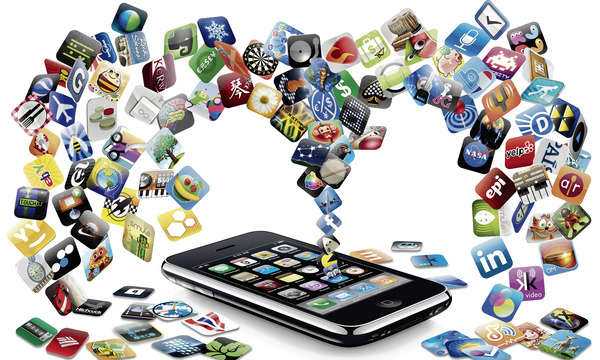The whole of Silicon Valley is buzzing these days with noise around Apple’s iWatch and Google’s Glasses, which are due for release any time this year or early next year! The excitement is very legitimate as both products have huge potential to make human communication and processing more seamless. And it doesn’t stop there, as both Google and Apple are gearing up for whole new range of products in the near future, as Sergey Brin explained at a Ted conference that the current mode of portable communication and data processing devices (i.e. Smartphones) are not up to the mark and can get far better than this. At the same time Tim Cook (Apple CEO) consoled their worried investors, concerned about falling stock prices, with a strong indication of whole new range of products.
- This article is not about discussing features of Google’s Glasses and iWatch, but is more about analysing next wave of Silicon Valley product line for hardware, network and software i.e. let’s look at what exactly the future might hold when it comes to communication and information processing, based on earlier indications from industry experts & leaders, recent rumours and glimpses of upcoming product lines.
All indications are toward hardware embedding in the human body
Manufacturers and marketers have finally realised that the smartphones, tablets, and laptops are not the most convenient devices when it comes to carrying, using them for taking pictures or video, and on top of that they are under pressure to come up with new product lines to beef up their revenue and allay the threat of reducing product life cycles. All these factors in addition to recent advancement in core processors, voice, image, touch screen and semantic analysis might force big players like Apple, Samsung and Google to come up with a product line that can be easily carried and at same time naturally process audio and visual data. For example, Google glass with retina-focussed built-in camera with voice recorder can process images in one blink, instead of taking out a phone, switching it on, opening the camera app, focussing and taking the picture. Similarly a watch with built-in phone, music app, health indicators and voice recognition can easily replace phone, SMS, email, and social media activities! Another example is that Nike has launched a wristband to calculate your body mass index, calories burned, heartbeat, distance covered, height climbed etc. when doing exercise!
Sentiments are sexier than location when it comes to software!
Marissa Mayer said in her recent Bloomberg interview that the key to Yahoo’s potential success would be how cleverly they can cater to users’ interests, and this phenomenon is very prevalent in software companies. These days whole focus is to build software that can capture human intentions, emotions or sentiments and translate those to render information in the desired way. For example, Wii build a game that can sense your body movement to help you build your exercise regime. Samsung is about to introduce an eye-scrolling technique where phones, tablets or computer screens can detect eye movements and scroll from top to bottom to left to right! Amazon has launched a price comparison app which can detect a product image and find the best price around the web. Apple’s Siri and Google’s Voice are a step towards voice processing, where your smart devices can detect your voice and execute subsequent commands from sending text to taking pictures to calling a friend! Twitter with Nielson and Blufin Lab might introduce TV ratings based on people’s sentiments on Twitter, rather than just based on their voting or viewership patterns!
And to bring all this data together, cloud computing (i.e. storing data at one central place) is coming in handy too so that software platforms (e.g. Google, Yahoo, Facebook, Twitter, LinkedIn, Amazon cloud, Dropbox etc.) with cloud-enabled services are processing all these human emotions and storing centrally. Fortunately or unfortunately this also creates an opportunity for hackers to reinterpret and render data to a vast range of interested parties!
Problem might be battery life, networking and software readiness?
I know all this sounds very cool, but there are a number of challenges before we can have an ideal device embedded into our bodies, with all features to understand and render what we are thinking, what is happing around us and our family and friends, as currently such devices run out of battery very quickly, software doesn’t reflect the exact sentiments and finding the right network with bandwidth in remote or less commercial areas is still a mission!
Conclusion:
I don’t want to paint a fancy picture of a singularity where we will have a chip inserted into our bodies before, or soon after, birth to enable us to store and process terabytes in seconds (like a computer) and communicate like a phone and capture images or video (like cameras) and process voice like microphones,
but if we look at recent hardware and software advancements, they all relate to improving core processors, image, voice recognition, semantic analysis, making information available everywhere and rendering devices portable and capable of sensing body movements.
Therefore I don’t think we are very far from having a device that can, with the help of smart software and cloud storages, easily tag onto our body and help us to do what we can do with the help of smartphones, cameras, voice recorders, and /or tablets and computers. There will be challenges, like fuelling energy to these devices, finding common protocols to communicate data to various points and immaculate software to interpret human sentiments, but these issues are getting huge attention within and outside of Silicon Valley, and sooner or later they will be resolved. Overall the technology alignment with the human body and emotions is natural progression and inevitable!
Formula for Future Tech Development Might looks like below!
Core Processors * Moore Law + Cloud+ Semantic Analysis + Image/Video Recognition + Siri + Body Sensors =Human (Tech) Body


